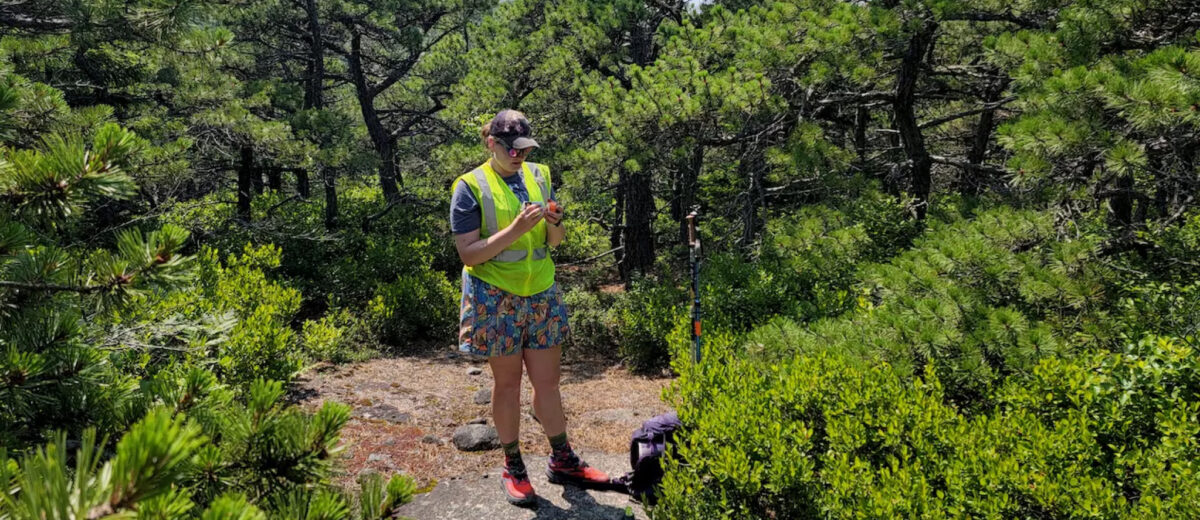by Caroline Kanaskie, Second Century Stewardship Fellow
I am a Ph.D. student studying earth and environmental science at the University of New Hampshire. I spent most of this past summer in Acadia National Park, surveying the pitch pine trees we find on many of the rocky summits. These trees may one day be threatened by a tree-killing beetle, if our winters continue to warm. My enthusiasm for this work comes from a few places.
First is the trees themselves. Now in general, pitch pine trees are not tall and straight. They don’t have much of a market value here in New England. They like to grow in sandy soils, and fire can actually help them grow. After the widespread fires of 1947 in Maine, including on Mount Desert Island, lots of scraggly “small, undesirable pine trees” grew in abundance. But I study these trees because they aren’t that common in New England–Acadia is actually the northern part of their range! I love to share my knowledge of these unconventionally cool trees, and I can probably convince you that they are just as cool as the white pine that is so commonly associated with Maine. While pitch pine may be undesirable to some, the pitch pine barrens habitat is home to rare plants and animals. I guess in a way, I like to root for the underdog of the pine trees.
Second is being outside, together. It probably doesn’t surprise you that I like to be outside. I am grateful that I had some family members who shared their love for the outdoors with me, which inspired me to pursue a career in the environmental field. While I do work alone in the field at times, and I enjoy hiking by myself, over the past 10 years, I have witnessed how working and playing outside can really bring people together. I ran college pre-orientation trips: Imagine 12 first year college students, dropped off on campus, and whisked away to a state park with no cell service. I still get to see those friendships thriving years later. Just last week, in the class I am currently teaching, I noticed how my students were chatting and laughing during our outdoor lab compared to our normal indoor class periods. I think there is a kind of vulnerability that comes with being outside together, and vulnerability allows us to grow–fostering personal growth and relationships.
Third is sense of place. I grew up in a landscape impacted by anthracite coal mining in Pennsylvania. Even though I enjoyed being outside as a kid, there were some outdoor spaces that I wasn’t allowed to explore. We couldn’t jump into every stream because of acid mine drainage. I vividly remember a PSA at school telling us not to go swimming in strip mines. As I’ve moved away from my childhood home, I find myself thinking a lot about sense of place: our relationships with the landscape, and the human and geological history of the places that I’ve explored. I am sensitive to my sense of place, and I don’t take it for granted that I live near some amazing public lands with trail systems and programming. I believe that the outdoors are for everyone, and I hope that my work can help protect our environment so we can continue to learn about the world and ourselves, outside.
